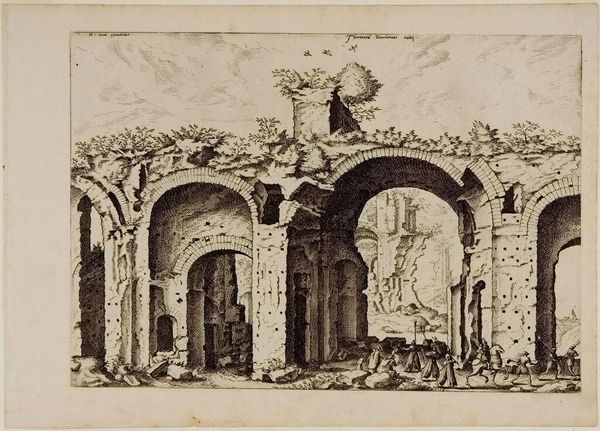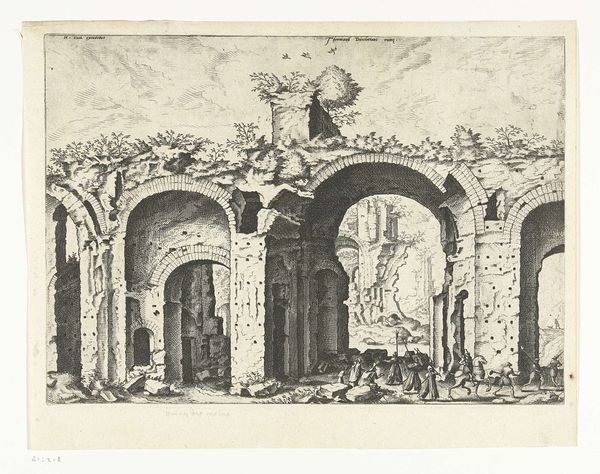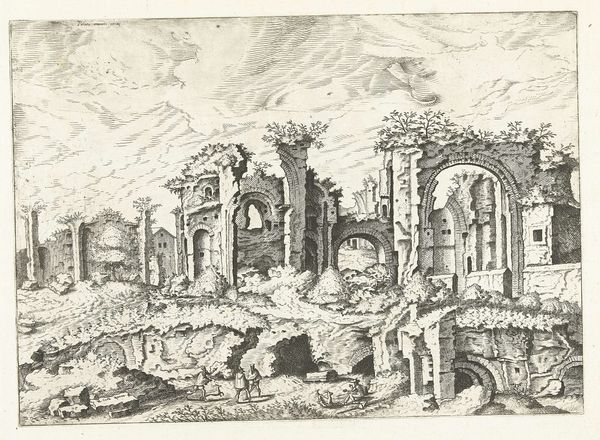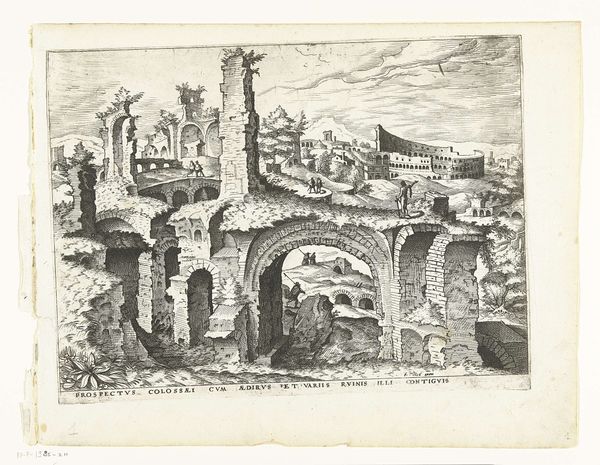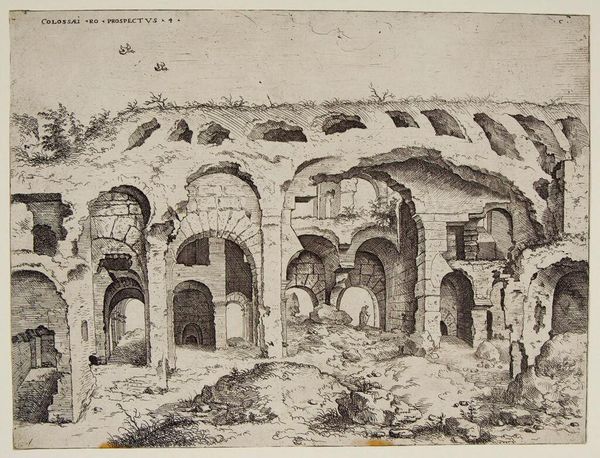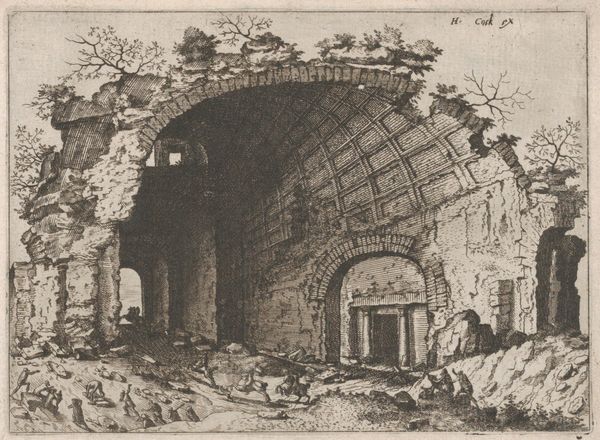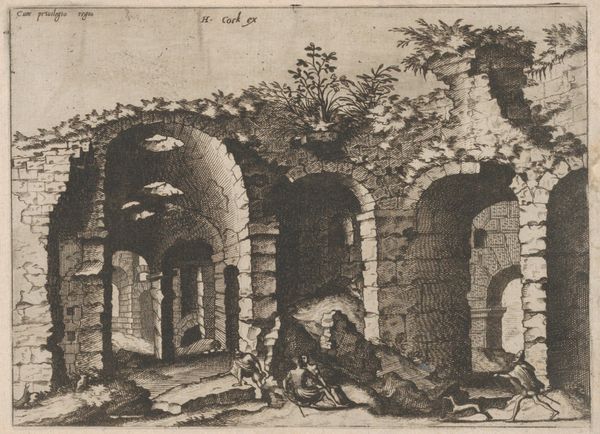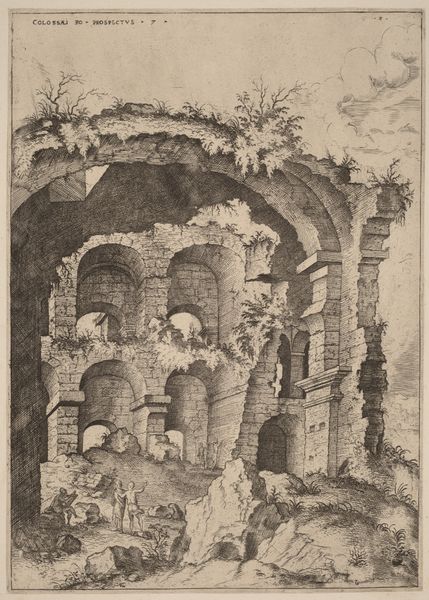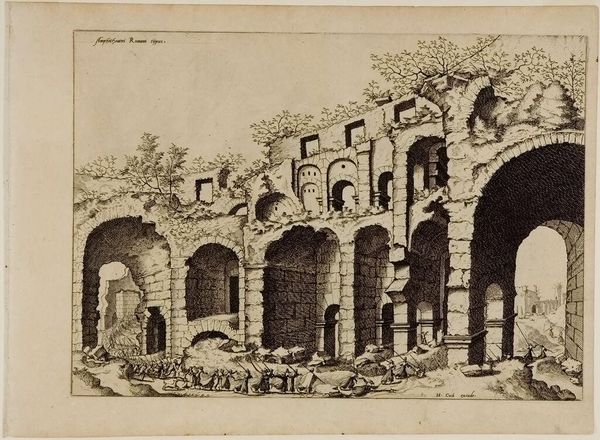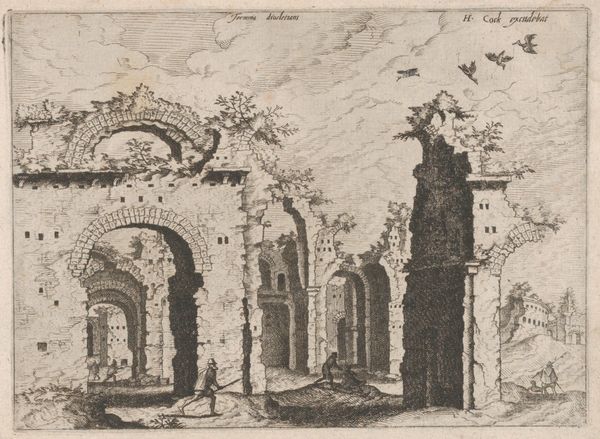
Derde gezicht op de Thermen van Diocletianus c. 1561 - 1600
0:00
0:00
drawing, etching, engraving, architecture
#
drawing
#
pen drawing
#
mechanical pen drawing
#
pen illustration
#
pen sketch
#
etching
#
old engraving style
#
landscape
#
mannerism
#
personal sketchbook
#
sketchwork
#
pen-ink sketch
#
pen work
#
sketchbook drawing
#
engraving
#
architecture
Dimensions: height 230 mm, width 323 mm
Copyright: Rijks Museum: Open Domain
Curator: Here we have "Third view of the Baths of Diocletian," an engraving dating from sometime between 1561 and 1600, attributed to Johannes or Lucas van Doetechum. It depicts a panoramic view of the ruined baths. Editor: My initial impression is one of monumental decay. The crumbling arches and overgrown stonework speak volumes about time's relentless march and the impermanence of even the grandest structures. There’s almost a romantic melancholy in the air. Curator: Indeed. This piece encapsulates the Mannerist fascination with antiquity, a longing for a lost Golden Age. Note the human figures interspersed amongst the ruins. They're dwarfed by the scale of the architecture, perhaps suggesting humanity’s fleeting existence compared to the enduring legacy of empires. The architectural ruins serve as memento mori. Editor: From a formal standpoint, the engraving displays remarkable skill in rendering texture and depth using only line work. The varying densities of hatching and cross-hatching create a sense of light and shadow, adding dimension to the ruins. I am also intrigued by the composition, which leads the eye through the arches to the implied vastness within. Curator: Consider, too, the cultural significance of the Baths of Diocletian themselves. They represent Roman engineering prowess and a particular lifestyle centered around public bathing and leisure. By depicting them in ruin, the artist subtly comments on the decline of Roman civilization and perhaps on the cyclical nature of history itself. Those arches are symbolic gateways to past and present. Editor: Absolutely. The overgrown foliage also contributes to this sense of reclamation by nature, of something grand returning to the earth. There's a palpable tension between order and chaos, structure and disintegration. Curator: These layered meanings within the seemingly simple scene is quite revealing. What appears at first glance to be merely an architectural depiction quickly opens into a complex commentary about time, legacy, and the impermanence of power. Editor: And from a purely aesthetic point of view, it’s simply a beautiful and evocative piece of art. The use of line and shadow creates a compelling image, and makes for a compelling visual experience even divorced from any knowledge of the subject. Curator: Agreed, there are still things to be discovered, even with repeated viewings. Editor: A fitting meditation on ruins, isn't it? We find meaning even within destruction.
Comments
No comments
Be the first to comment and join the conversation on the ultimate creative platform.
